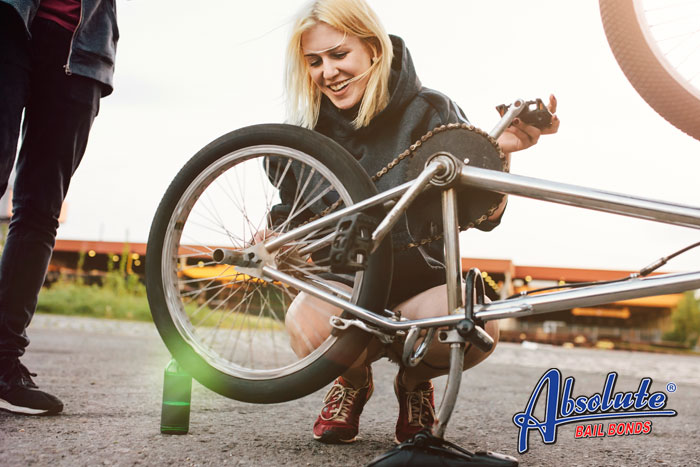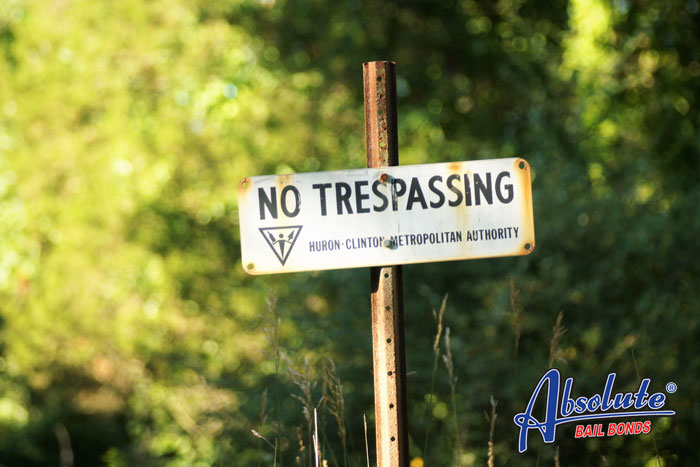
Make Sure you Choose a Reputable Bail Bonds Agency
When you learn that one of your loved ones has been arrested and needs you to help them secure a California bail bond, the kneejerk reaction is to call the first bail bonds agency you see and sign a contract.
Granted, there is a chance that this could work out in your favor and you could find yourself working with a wonderful bail bonds agency that truly cares for both you and your loved one. The problem is that there’s also a chance you could find yourself dealing with a shady business that leaves you in a worse situation than what you were in before you contacted them.
Given how much money you will pay the bail bonds agency and the fact that you’ll be linked to them for several months, it’s in your best interest to choose the most reputable bail bond agency you can find.
Here are some things you should look for that tell you you’re dealing with a reputable company.
Free Consultations
A free consultation is a good sign. Not only does it provide you with a free way of learning about the bail bonds process and the California bail program, but it’s also an excellent way to establish a connection.
If you’re dealing with a reputable bail bond agency, they will use the consultation to answer all of your questions, get some background information on your loved one, and make sure you fully understand how the California bail bond system works. What you shouldn’t experience during the consultation is pressure to make a fast decision and sign with the agency.
Upfront Fees
A reputable bail bonds agency will be upfront about all their fees and charges. The standard fee for a bail bond is 10% of the set bail price. In some cases, it may be a little less if the agency offers a good discount, but it shouldn’t be more.
Some disreputable agencies will try to pad the fee by adding some hidden charges to the bill. If the agency isn’t upfront about all the items on their bill, or if they try to charge more than 10%, you need to look for a different California bail bond agency.
They Have a Good Reputation at the Jail
There’s nothing that says you can’t ask officers and court officials who are hanging around at the jail for suggestions about reputable bail bond agencies. They’ll probably be happy to provide you with a few ideas.
Absolute Bail Bonds in Lynwood has been operating in California for several decades. We have a reputation for fair prices, outstanding customer service, and for writing bail bonds and springing people from jail in a short time frame. When one of your loved ones requires bail, we suggest calling us. We’re confident we can help. We’re open 24/7 and all consultations are free.

Unsure About Getting A Bail Bondsman? Here’s Why You Should
Our team here at Absolute Bail Bonds aims to get your loved one out of jail, and change people’s perceptions on bail bonds. Bail bonds are directly related to negative situations – someone is arrested and needs to be bailed out of jail. What good thing can be related to an arrest?
Have you thought of bail bonds in the way that because it gets someone out of jail, it reunites your family? That’s a positive thought. And more often than not, most family and friends strengthen their bonds with each other as a result of this bail bond release.
It often takes an outside perspective to change the view of something so dark to something that is relieving and much needed. Without this bail bond experience, relationships between friends and family may never experience that much needed tightening.
To get a free consultation on a bail bond, or to simply just get more information, please visit us online to chat with one of our representatives, or call us at 1-800-793-2245.

What are Considered Attempted Crimes in California
We’ve all heard stories about people who are charged with attempted crimes such as attempted murder, attempted assault, or attempted burglary. While we’re familiar with the concept of attempted crimes, few of us fully understand how it’s possible to be charged and even convicted, of a crime that didn’t actually happen.
The issue of attempted crimes in California is discussed in Penal Code 664 PC. The law defines attempted crimes as any instance when a person makes a concentrated effort to pull off an actual crime and break the law. The fact that the intent was real, even if the person failed to completely follow through in their attempt to break the law.
The law specifically states that “every person who attempts to commit any crime, but fails, or is prevented or intercepted in its perpetration, shall be punished where no provision is made by law for the punishment of those attempts.”
There are several examples of attempted crimes. These examples include:
- A victim escaping and fleeing from a sexual assault scenario
- Breaking into a house, but being stopped before anything is actually stolen
- A gun backfiring during what would have been a murder
The interesting thing about the way California handles attempted crimes is how the sentencing is handled. The rule of thumb for attempted crimes in California is that the maximum sentence for a guilty conviction will be one-half of the maximum sentence had the accused been able to complete their crime.
Composing a successful attempt for attempted crimes in California generally depends on how much evidence the police have gathered, the type of attempted crime the accused is facing, and how close they came to committing the crime.
Some successful defenses that have been used in the past include:
- That while the accused may have considered the crime, there is no evidence that they would actually carry through with it
- The accused was framed
- The accused didn’t realize that they were about to break the law
Whether the attempted crime is handled as a misdemeanor or a felony depends on how the charges would have been handled had the law actually been broken. This means that there are both misdemeanor and felony attempted crime cases going through the California legal system all the time.
While some maintain that it’s unreasonable to charge and convict people of attempted crimes in California, there is little chance that things will change any time soon. California lawmakers hope that by continuing to pursue attempted crime cases they will:
- Discourage people from breaking the law
- That people realize that there are consequences for actions, even if the actions aren’t fully carried through
The best way to make sure you’re never charged with an attempted crime in California is by never even planning a hypothetical crime.

Riding Your Bike Under the Influence of Drugs or Alcohol
The rising fuel costs are causing many of us to take a second look at our bikes. Now they not only seem like a pleasant way to stay in shape but also a viable way to ease transportation costs. Not only can you use your bike to get from your home to your workplace, but you can also use it to go out at night. Not paying for gas means you’ll have more money in your pocket for drinks, and since you’re cycling rather than driving you don’t have to worry about watching how much you drink.
California law prohibits you from driving and cycling while under the influence of drugs and alcohol.
California is so serious about making sure that you don’t bike while under the influence that they created an entire law that deals with anyone who is under the influence when they mount their bike.
The law is California Vehicle Code 21200.5 VC and it states that:
“Notwithstanding Section 21200, it is unlawful for any person to ride a bicycle upon a highway while under the influence of an alcoholic beverage or any drug, or under the combined influence of an alcoholic beverage and any drug. Any person arrested for a violation of this section may request to have a chemical test made of the person’s blood, breath, or urine for the purpose of determining the alcoholic or drug content of that person’s blood pursuant to Section 23612, and, if so requested, the arresting officer shall have the test performed.”
The good news is that while the law prohibits you from cycling while under the influence (CUI) the fallout from doing so is nowhere near as life-altering as getting a DUI.
When you’re charged with a CUI you will only face misdemeanor charges. If you’re convicted of CUI in California you won’t spend any time in jail and the maximum fine you’ll face is $250.
While the potential fallout from a CUI isn’t as severe as what you’d get if you were convicted of a DUI, that doesn’t mean you shouldn’t take the situation seriously. The first issue is that you will have a criminal record that shows an alcohol-related offense.
The second thing to consider is that if you’re cycling under the influence and accidentally hurt someone you will face additional legal and civil penalties that could have a long-term negative impact on your life.
While it’s okay to go out and have a good time, when all is said and done, it’s better to have a designated driver than to cycle home after an evening of fun and drinks.

Consequences Of Aggravated Trespass in California
Most people don’t know that there’s such a thing as aggravated trespass in California until they see it’s one of the criminal charges they’re facing. Aggravated felony trespass is addressed in Penal Code 601 PC. The fact that you’re facing an aggravated trespass charge indicates the police have gathered evidence that suggests you threatened to physically injure someone and used the threat to gain entrance to their home/workplace/etc. without them granting permission. It should come as no surprise to learn that aggravated trespass is far more serious than a standard trespassing charge.
It’s important to note that sometimes the threat of physical harm and the actual trespassing act don’t always have to happen at the same time for a charge of aggravated trespassing to be filed against you. If you have threatened violence within 30 days of the trespassing act, aggravated will be added to the charges. An example of this is threatening to attack an ex and then having a knife/hammer/bat/gun on hand when you unlawfully trespass on your ex’s property a week later.
Given how serious aggravated trespassing sounds, many people are surprised to learn that it is one of California’s wobbler offenses. That means it can be handled as a misdemeanor or a felony. Generally, the exact circumstances of the threat and the accused’s conduct while they were trespassing determines if they face misdemeanor or felony charges.
A person convicted of misdemeanor aggravated trespass could be sentenced to as much as one year in a county jail and/or misdemeanor probation. For a felony conviction, the maximum sentence is three years in a county jail and/or felony probation. It’s worth noting that the felony conviction could negatively impact your right to own a gun in California.
While an aggravated trespassing charge seems grim, some defenses can be effectively used.
The first defense is that the accused owns the property or works on the property where they allegedly trespassed. It’s impossible to trespass on a property that’s legally your own. The law about trespassing/ownership/property rights does get confused if the property is being leased by someone else.
Another defense that’s been successfully used in aggravated trespassing cases is that no credible threat was made. In these cases, the burden of proof rests on the prosecution’s shoulders. If they can’t prove that there was a credible threat, the charges will be reduced to standard trespassing.
There is a time limit connected to aggravated trespassing charges. California law dictates that the threat and the trespassing act must happen within 30 days of each other.

Laws About Hitting a Pedestrian in California
California has a reputation as being a great place for pedestrians. The weather makes it possible for pedestrians to walk year-round and the state has done a wonderful job of creating places where pedestrians can stroll without encountering traffic. While pedestrians are invited to enjoy the benefits of walking, it’s important to understand that if you decide to stroll, there’s a chance you could be hit by a car. It’s equally important to understand that the odds of you having a pedestrian-car incident have increased in recent years.
Studies indicate that life for pedestrians is becoming increasingly dangerous. The Governors Highway Safety Association recently gathered data that indicated that the number of pedestrian deaths in the United States increased by 35 percent between 2009 and 2017. According to Triple-A, things are getting worse. The organization reported that from 2010 to 2019 pedestrian deaths increased by 46%.
It doesn’t appear that there is one particular reason pedestrian deaths have risen so much. Some feel that the fact that drivers are getting older could play a role. Another issue is the fact that drivers continue to ignore warnings about using cell phones while driving. It’s worth noting that not all pedestrian/car incidents that involve phones aren’t because the driver was using their phone. In 2010, an estimated 78,000 pedestrian injuries were the direct result of the pedestrian using their phone and not paying attention to their surroundings.
If you drive in California, you have a responsibility to look out for pedestrians. It’s an aspect of being a good defensive driver. Since California has a reputation for being such a great pedestrian state, you must assume that you’ll see a few people walking whenever you drive.
When you do see people walking, automatically check how you’re driving. The last thing you need is to be accused of reckless driving that resulted in you striking a pedestrian. It doesn’t matter if you fail to yield, are speeding, or are distracted, if you strike a pedestrian with your vehicle and there’s proof that you’re at fault, you could face steep fines, jail time, and civil lawsuits.
When you see a pedestrian walking, particularly if they are using their phone, give them as wide a berth as possible. Don’t automatically assume that they will stop at crosswalks, pay attention to no crossing signs, or that they won’t suddenly veer off the sidewalk.

You Can Still Get Your Drinks To-Go
For as long as most of us can remember if you wanted to go out for a drink, you had to stay at the bar until you were finished. You weren’t allowed to order a drink to go.
During the Covid-19 pandemic, things changed. Bar and restaurant owners struggled to keep their businesses afloat while their regular patrons worked hard to obey social distancing and self-quarantining laws and stayed home.
The problem prompted lawmakers to take an unexpected step. As the pandemic continued to drag on, they passed a law that made it legal to order a drink to go. The catch was that this was a temporary law, designed to get people through the pandemic.
If you loved ordering your favorite drink from a bar and then taking it home so you could enjoy it in your own home, you’ll be delighted to know you can still do this. The recent passing of Senate Bill 389 allows some bars and restaurants to send customers home with wine and cocktails. Best of all, this law will remain in effect for the next five years. It’s likely that in five years, lawmakers will evaluate the situation and if it’s going well, they could decide to allow to-go adult beverages to continue.
Just because you can order your favorite wine and cocktail to-go, you’re free to do whatever you want with the drink. You still aren’t allowed to drive while intoxicated. Nor are you allowed to drink while you’re driving. Getting caught for either of these things will result in you getting into legal trouble.
You already know about California’s drunk driving laws, but you’re probably less aware of the state’s open container laws. In California, you aren’t allowed to consume alcohol or marijuana while you’re in a car. It doesn’t matter if you’re a driver or a passenger, you can’t have an open container in the vehicle.
If you are caught with an open container in your car, you will be hit with an infraction. The fine ranges from $100 to $250. If the drivers or passengers are underage, the repercussions of the open container is could result in six months in jail or a $1,000 fine.
Do you think that continuing the adult beverage to-go option is a good deal? Do you think that in five years lawmakers will choose to extend the law?

We’re Quick, Right To The Point
We don’t want to waste your time (we know it’s precious and there’s no time to waste) so we’re going to get right to the point.
Here at Absolute Bail Bonds in Los Angeles, we offer:
- Customizable, low monthly rate payment plans.
- 24/7 availability.
- No hidden fees.
- Convenient and secure online payment system.
- Cash, credit, debit, and checks are accepted.
- Discounts for qualifying individuals.
- Licensed and experienced bail bond agents.
- Friendly, hardworking, understanding bail bond agents.
- Confidentiality.
- Phone approvals; if a face-to-face meeting is necessary, our agents go to you.
See how quickly we laid out what we can do for you? Error-free speed is our thing – we work very fast (and don’t worry we don’t cut corners either) to get people bailed out of jail, and our process, efficiency, and reliability won’t be any different for you and your loved one.
Contact someone at Absolute Bail Bonds in Los Angeles by opening a chat room online with us, or by calling us at (800)793-2245. We absolutely won’t let you down!

Early Warning Signs that Your Partner is Dangerous
One of the things many domestic abuse victims say is that they never thought that it could happen to them. Another comment is that they simply didn’t recognize the early warning signs.
The truth of the matter is that many people don’t know that most relationships have red flags that could serve as important signs that it’s time to get out of the relationship before your partner becomes dangerous. Heeding these early red flags and removing yourself from the relationship early is the best way to preserve your mental and physical health.
Frequent Bursts of Aggressive Behavior
If your partner frequently succumbs to bursts of aggression, particularly if it’s aimed towards you, a pet, or others, treat it as a red flag. Yes, everyone has bad days. Yes, everyone does get angry from time to time, but when that aggression causes a person to punch holes in a wall, kick a dog, make a threat, or grab you, your partner hasn’t learned how to properly manage their anger.
Possessiveness
The fact that your significant other gets jealous when others are around you might seem cute at first. It might even make you feel more loved, but possessiveness can go to far. Signs that your significant other’s jealousy is becoming dangerously possessive include that they think you’re deliberately trying to make them jealous, that the jealously leads to physical and verbal aggression, that they are actively trying to cut you off from your friends and family.
Many abusers demonstrate possessive behavior early in the relationship. In many cases, it’s the first red flag that the relationship will take a dangerous turn. Take the early signs of a possessive nature as an early indicator that you should end the relationship sooner rather than later.
Manipulation
One of the hardest red flags to catch is manipulation. Many abusers are geniuses when it comes to manipulation. They are so good that it can be difficult to realize that you’re being manipulated. If you frequently find yourself doing things you wouldn’t normally want to do, or if you notice that your partner constantly uses emotions, particularly guilt, to change your mind about situations, people you like, and attending events, they’re a manipulator and you should proceed with care.
Pay Attention to How Friends and Family Feel About Your Partner
The odds are good that the people who truly love you the most will be the first to notice that something simply isn’t right about your significant other. If they say that you’re changing, or that they have a bad feeling about your partner, ask them to clarify. While it’s okay for one or two friends to simply not like your new partner, if everyone mentions the same red flags, or if it’s someone who is usually an excellent judge of character, give yourself some time and space to evaluate your relationship and determine if your friends and family are right and that your partner isn’t actually as perfect as you think.
Most people automatically assume that domestic abuse situations always involve an abusive male and a female victim. The truth is that women can be as abusive as men, which is why everyone needs to be mindful of red flags when they are involved in a relationship.


